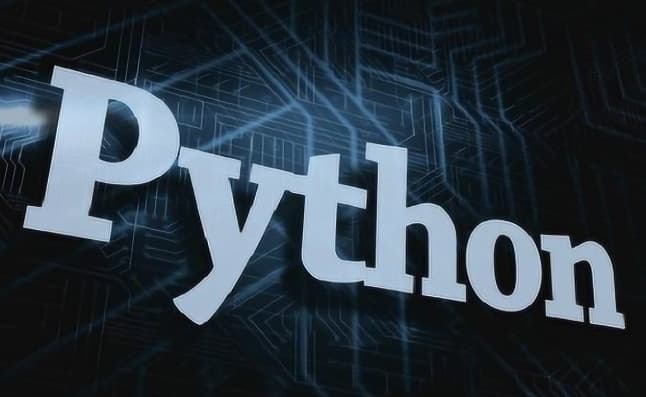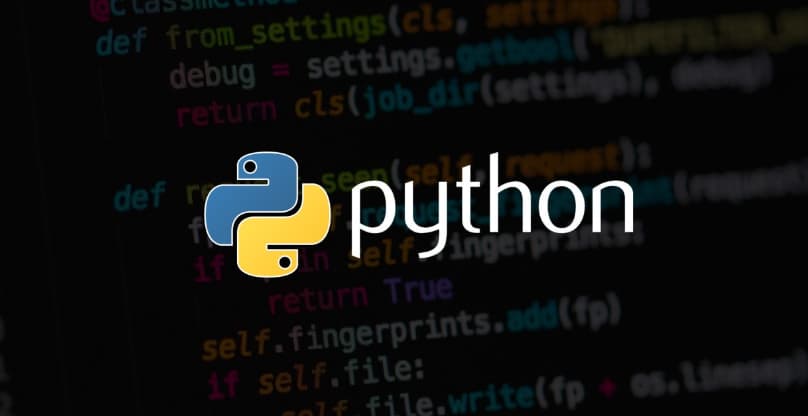第一章 初识对象
生活中或是程序中,我们都可以使用设计表格、生产表格、填写表格的形式组织数据
进行对比,在程序中”设计表格”称之为:设计类 (class),”打印表格”称之为:创建对象 ,”填写表格”称之为:对象属性赋值
1 2 3 4 5 6 7 8 9 10 11 12 13 14 15 16 17 18 19 20 21 22 23 24 class Student : name = None gender = None nationality = None native_place = None age = None stu_1 = Student() stu_1.name = "林军杰" stu_1.gender = "男" stu_1.nationality = "中国" stu_1.native_place = "山东省" stu_1.age = 31 print (stu_1.name)print (stu_1.gender)print (stu_1.nationality)print (stu_1.native_place)print (stu_1.age)
类的成员方法 class是关键字,表示要定义类 了
类的属性,即定义在类中的变量(成员变量)
1 2 3 4 5 6 7 8 9 10 11 12 13 14 15 class Student : name = None def say_hi (self ): print (f"大家好呀,我是{self.name} ,欢迎大家多多关照" ) def say_hi2 (self,msg ): print (f"大家好,我是: {self.name} ,{msg} " ) stu = Student() stu.name ="周杰轮" stu.say_hi2("哎呦不错呦" ) stu2 = Student() stu2.name ="林俊劫" stu2.say_hi2("我看好你" )
类和对象 类 只是一种程序内的“设计图纸”,需要基于图纸生产实体(对象),才能正常工作这种套路,称之为:面向对象编程 ,是使用对象进行编程,即设计类,基于类创建对象,并使用对象来完成具体的工作
1 2 3 4 5 6 7 8 9 10 11 12 13 14 15 16 17 18 19 20 class Clock : id = None price = None def ring (self ): import winsound winsound.Beep(2000 ,3000 ) clock1 = Clock() clock1.id ="003032" clock1.price = 19.99 print (f"闹钟ID: {clock1.id } ,价格: {clock1.price} " )clock1.ring() clock2 = Clock() clock2.id ="003033" clock2.price = 21.99 print (f"闹钟ID:{clock2.id } ,价格: {clock2.price} " )clock2.ring()
构造方法
Python类可以使用:__init__ ()方法,称之为构造方法
1 2 3 4 5 6 7 8 9 10 11 12 13 14 15 16 17 class Student : name = None age = None tel = None def __init__ (self, name, age ,tel ): self.name = name self.age = age self.tel = tel print ("Student类创建了一个类对象" ) stu = Student("周杰轮" ,31 ,"18506666" ) print (stu.name)print (stu.age)print (stu.tel)
实现在创建类对象 (构造类)的时候,会自动执行
魔术方法 上文学习的__init__构造方法,是Python类内置的方法之一。这些内置的类方法,各自有各自特殊的功能,这些内置方法我们称之为: 魔术方法
__init__构造方法,可用于创建类对象的时候设置初始化行为
__str__字符串方法,用于实现类对象转字符串的行为
__le__用于2个类对象进行小于或大于比较
__eq__用于2个类对象进行相等比较
1 2 3 4 5 6 7 8 9 10 11 12 13 14 15 16 17 18 19 20 21 22 23 24 class Student : def __init__ (self, name, age ): self.name = name self.age = age def __str__ (self ): return f"Student类对象, name:{self.name} , age:{self.age} " def __lt__ (self, other ): return self.age < other.age def __le__ (self, other ): return self.age <= other.age def __eq__ (self,other ): return self.age == other.age stu1 = Student("周杰轮" , 31 ) stu2 = Student("林俊节" , 36 ) print (stu1 == stu2)
封装/封装案例 封装的概念:将现实世界事物在类中描述为属性 和方法 ,即为封装私有成员 了
1 2 3 4 5 6 7 8 9 10 11 12 13 14 15 16 17 class Phone : __current_voltage = 0.5 def __keep_single_core (self ): print ("让CPU以单核模式运行" ) def call_by_5g (self ): if self.__current_voltage >= 1 : print ("5g通话已开启" ) else : self.__keep_single_core() print ("电量不足,无法使用5g通话,并已设置为单核运行进行省电。" ) phone = Phone() phone.call_by_5g()
实际意义:在类中提供仅供内部使用的属性和方法,而不对外开放(类对象无法使用)
设计带有私有成员的手机…1 2 3 4 5 6 7 8 9 10 11 12 13 14 15 16 17 18 19 20 21 class Phone : __is_5g_enable = False def __check_5g (self ): if self.__is_5g_enable: print ("5g开启" ) else : print ("5g关闭,使用4g网络" ) def call_by_5g (self ): self.__check_5g() print ("正在通话中" ) phone = Phone() phone.call_by_5g()
继承的基础语法 继承就是一个类 ,继承另外一个类的成员变量和成员方法pass是占位语句用来保证函数(方法)或类定义的完整性 ,表示无内容,空的意思
1 2 3 4 5 6 7 8 9 10 11 12 13 14 15 16 17 18 19 20 21 22 23 24 25 26 27 28 29 30 31 32 33 34 35 36 37 38 39 40 41 42 43 class Phone : IMEI = None producer ="IT" def call_by_4g (self ): print ("4g通话" ) class Phone2022 (Phone ): face_id ="10001" def call_by_5g (self ): print ("2022年新功能: 5g通话" ) phone = Phone2022() print (phone.producer)phone.call_by_4g() phone.call_by_5g() class NFCReader : nfc_type ="第五代" producer ="HM" def read_card (self ): print ("NFC读卡" ) def write_card (self ): print ("NFC写卡" ) class RemoteControl : rc_type="红外遥控" def control (self ): print ("红外遥控开启了" ) class MyPhone (Phone,NFCReader,RemoteControl): pass phone = MyPhone() phone.call_by_4g() phone.read_card() phone.write_card() phone.control() print (phone.producer)
复写和调用父类成员
复写表示:对父类的成员属性或成员方法进行重新定义
注意:只可以在子类内部调用父类的同名成员,子类的实体类对象调用默认是调用子类复写的
1 2 3 4 5 6 7 8 9 10 11 12 13 14 15 16 17 18 19 20 21 22 23 class Phone : IMEI = None producer = "ITCAST" def call_by_5g (self ): print ("使用5g网络进行通话" ) class MyPhone (Phone ): producer ="ITHEIMA" def call_by_5g (self ): print ("开启CPU单核模式,确保通话的时候省电" ) print (f"父类的厂商是: {super ().producer} " ) super ().call_by_5g() print ("关闭CPU单核模式,确保性能" ) phone = MyPhone() phone.call_by_5g() print (phone.producer)
变量的类型注释 类型注解:在代码中涉及数据交互之时,对数据类型进行显式的说明,可以帮助PyCharm等开发工具对代码做类型推断协助做代码提示,开发者自身做类型的备注
类型注解支持:变量的类型注解,函数(方法)的形参和返回值的类型注解
变量的类型注解语法:
语法1: 变量: 类型
1 2 3 4 5 6 7 8 9 10 11 12 13 14 15 16 17 18 19 20 21 22 23 24 import randomvar_1: int = 10 var_2: str = "itheima" var_3: bool = True class Student : pass stu: Student = Student() my_list: list =[1 ,2 ,3 ] my_tuple: tuple = (1 ,2 ,3 ) my_dict: dict = {"itheima" : 666 } my_list: list [int ] = [1 ,2 ,3 ] my_tuple: tuple [int ,str , bool ] = (1 ,"itheima" , True ) my_dict: dict [str ,int ] = {"itheima" : 666 } var_4 = random.randint(1 ,10 ) var_5 = json.loads('{"name": "zhangsan"}' ) def func (): return 10 var_6 = func()
注意事项: 类型注解只是提示性的,并非决定性的。数据类型和注解类型无法对应也不会导致错误
函数和方法类型注解 形参的类型注解|返回值的类型注解
1 2 3 4 5 6 7 def add (x: int ,y: int ): return x + y def func (data: list ) -> list : return data
Union联合类型注解 Union类型:使用Union可以定义联合类型注解from typing import Union
1 2 3 4 5 6 from typing import Union my_list: list [Union [int , str ]] = [1 ,2 ,"itheima" ,"itcast" ] def func (data:Union [int ,str ] ) -> Union [int , str ]: pass func()
多态 多态指的是,同一个行为,使用不同的对象获得不同的状态。如,定义函数(方法),通过类型注解声明需要父类对象,实际传入子类对象进行工作,从而获得不同的工作状态
抽象类(接口):包含抽象方法的类,称之为抽象类。
1 2 3 4 5 6 7 8 9 10 11 12 13 14 15 16 17 18 19 20 21 22 23 24 25 26 27 28 29 30 31 32 33 34 35 36 37 38 39 40 41 42 43 44 45 46 47 48 49 50 51 52 53 54 55 56 class Animal : def speak (self ): pass class Dog (Animal ): def speak (self ): print ("汪汪汪" ) class Cat (Animal ): def speak (self ): print ("喵喵喵" ) def make_noise (animal: Animal ): animal.speak() dog = Dog() cat = Cat() make_noise(dog) make_noise(cat) class AC : def cool_wind (self ): pass def hot_wind (self ): pass def swing_l_r (self ): pass class Midea_AC (AC ): def cool_wind (self ): print ("美的空调制冷" ) def hot_wind (self ): print ("美的空调制热" ) def swing_l_r (self ): print ("美的空调左右摆风" ) class GREE_AC (AC ): def cool_wind (self ): print ("格力空调制冷" ) def hot_wind (self ): print ("格力空调制热" ) def swing_l_r (self ): print ("格力空调左右摆风" ) def make_cool (ac: AC ): ac.cool_wind() midea_ac = Midea_AC() gree_ac = GREE_AC() make_cool(midea_ac) make_cool(gree_ac)
数据分析案例步骤-文件读取/数据计算/可视化开发 1 2 3 4 5 6 7 8 9 10 11 12 13 14 15 16 17 18 19 20 21 22 23 24 25 26 27 28 29 30 31 32 33 34 35 36 37 38 39 from file_define import FileReader,TextFileReader,JsonFileReaderfrom data_define import Recordfrom pyecharts.charts import Barfrom pyecharts.options import *from pyecharts.globals import ThemeTypetext_file_reader = TextFileReader("F:/Code/python/数据分析案例/2011年1月销售数据.txt" ) json_file_reader = JsonFileReader("F:/Code/python/数据分析案例/2011年2月销售数据JSON.txt" ) jan_data: list [Record] = text_file_reader.read_data() feb_data: list [Record] = json_file_reader.read_data() all_data: list [Record] = jan_data + feb_data data_dict = {} for record in all_data: if record.date in data_dict.keys(): data_dict[record.date] += record.money else : data_dict[record.date] = record.money bar = Bar(init_opts=InitOpts(theme=ThemeType.LIGHT)) bar.add_xaxis(list (data_dict.keys())) bar.add_yaxis("销售额" , list (data_dict.values()), label_opts=LabelOpts(is_show=False )) bar.set_global_opts( title_opts=TitleOpts(title="每日销售额" ) ) bar.render("每日销售额柱状图.html" )
1 2 3 4 5 6 7 8 9 10 11 12 13 14 15 16 17 18 19 20 21 22 23 24 25 26 27 28 29 30 31 32 33 34 35 36 37 38 39 40 41 42 43 44 45 46 47 48 49 50 51 52 53 54 55 56 import jsonfrom data_define import Recordclass FileReader : def read_data (self ) -> list [Record]: pass class TextFileReader (FileReader ): def __init__ (self,path ): self.path = path def read_data (self ) -> list [Record]: f = open (self.path,"r" ,encoding="UTF-8" ) record_list: list [record] = [] for line in f.readlines(): line = line.strip() data_list = line.split("," ) record = Record(data_list[0 ],data_list[1 ],int (data_list[2 ]), data_list[3 ]) record_list.append(record) f.close() return record_list class JsonFileReader (FileReader ): def __init__ (self, path ): self.path = path def read_data (self ) -> list [Record]: f = open (self.path,"r" ,encoding="UTF-8" ) record_list: list [record] = [] for line in f.readlines(): data_dict = json.loads(line) record = Record(data_dict["date" ],data_dict["order_id" ], int (data_dict["money" ]), data_dict["province" ]) record_list.append(record) f.close() return record_list if __name__ == '__main__' : text_file_reader = TextFileReader("F:/Code/python/数据分析案例/2011年1月销售数据.txt" ) json_file_reader = JsonFileReader("F:/Code/python/数据分析案例/2011年2月销售数据JSON.txt" ) list1 = text_file_reader.read_data() list2 = json_file_reader.read_data() for l in list1: print (l) for l in list2: print (l)
1 2 3 4 5 6 7 8 9 10 11 12 class Record : def __init__ (self, date, order_id, money,province ): self.date = date self.order_id = order_id self.money = money self.province = province def __str__ (self ): return f"{self.date} , {self.order_id} , {self.money} , {self.province} "
第二章 数据库介绍 数据库就是指数据存储的库,作用就是组织数据并存储数据
常见的数据库软件有: Oracle、MySQL、SQL Server、PostgreSQL、SQLite
数据库和SQL的关系:数据库(软件)提供数据组织存储的能力,SQL语句则是操作数据、数据库的工具语言
MySQL安装
MySQL的入门使用
mysql -uroot -p 打开SQL
SQL基础和DDL SQL:结构化查询语言,用于操作数据库,通用于绝大多数的数据库软件;‘号结尾,支持单行(--)、多行注释(#)DDL语法
SQL-DML DML语法
INSERT INTO 表[(列1,列2,……,列N)] VALUES(值1,值2,……,值N),……,(值1,值2,……,值N)]
1 2 3 4 5 6 7 8 9 10 11 12 13 14 15 16 17 18 19 20 DROP TABLE IF EXISTS student;CREATE TABLE student( id INT , name VARCHAR (20 ), age INT ); INSERT INTO student VALUES (10001 ,'周杰轮' ,31 ),(10002 ,'王力鸿' ,33 ),(10003 ,'林俊节' ,35 ),(10004 ,"张学油",36 ), (10005 ,"刘德滑",30 );# 删除name为林俊节的数据 DELETE FROM student WHERE name = '林俊节' ; # 注意,不要忘记'' # 删除 age > 33 的数据 DELETE FROM student WHERE age > 33 ;# 更新数据 UPDATE student SET name = '张学油' WHERE id = 4 ;# 删除全部数据 DELETE FROM student;
字符串的值,出现在SQL语句中必须要用单引号 包围起来
SQL-DQL-基础查询 基础查询的语法:SELECT 字段列表|* FROM 表DQL语法
SQL-DQL-分组聚合 分组聚合的语法:SELECT 字段|聚合函数 FROM 表 [WHERE 条件] GROUP BY 列
SQL-DML-排序分页 关键字:WHERE、GROUP BY、ORDER BY、LIMIT均可按需求省略,SELECT和FROM 是必写的
select * from student where age > 20 order by age desc;
Python操作MySQL基础使用 在Python中,使用第三方库: pymysql来完成对MySQL数据库的操作pip install pymysql
from pymysqlimport Connection 导包
执行SQL查询:
通过连接对象调用cursor()方法,得到游标对象
1 2 3 4 5 6 7 8 9 10 11 12 13 14 15 16 17 18 19 20 21 22 23 24 from pymysql import Connectionconn = Connection( host="localhost" , port=3306 , user="root" , password="你的密码" ) cursor = conn.cursor() conn.select_db("world" ) cursor.execute("select * from student" ) results = cursor.fetchall() for r in results: print (r) conn.close()
Python操作MySQL数据插入 pymysql库在执行对数据库有修改操作的行为时,是需要通过链接对象的commit成员方法来进行确认的。只有确认的修改,才能生效
1 2 3 4 5 6 7 8 9 10 11 12 13 14 15 16 17 18 19 20 21 22 23 24 from pymysql import Connectionconn = Connection( host="localhost" , port=3306 , user="root" , password="你的密码" , autocommit=True ) cursor = conn.cursor() conn.select_db("world" ) cursor.execute("insert into student values(10001, '周杰轮', 31,'男')" ) conn.close()
综合案例 1 2 3 4 5 6 7 8 9 10 create database py_sql charset utf8;use py_sql; create table orders( order_date date , order_id varchar (255 ), money int , province varchar (10 ) );
1 2 3 4 5 6 7 8 9 10 11 12 13 14 15 16 17 18 19 20 21 22 23 24 25 26 27 28 29 30 31 32 33 34 35 from file_define import TextFileReader,JsonFileReaderfrom data_define import Recordfrom pymysql import Connectiontext_file_reader = TextFileReader("F:/Code/python/数据分析案例/2011年1月销售数据.txt" ) json_file_reader = JsonFileReader("F:/Code/python/数据分析案例/2011年2月销售数据JSON.txt" ) jan_data: list [Record] = text_file_reader.read_data() feb_data: list [Record] = json_file_reader.read_data() all_data: list [Record] = jan_data + feb_data print (all_data)conn = Connection( host="localhost" , port=3306 , user="root" , password="_Shi200202AlanDoDo" , autocommit=True ) cursor = conn.cursor() conn.select_db("py_sql" ) for record in all_data: sql = f"insert into orders(order_date, order_id, money, province)" \ f"values('{record.date} ','{record.order_id} ', {record.money} ,'{record.province} ')" cursor.execute(sql) conn.close()
1 2 3 4 5 6 7 8 9 10 11 12 class Record : def __init__ (self, date, order_id, money, province ): self.date = date self.order_id = order_id self.money = money self.province = province def __str__ (self ): return f"{self.date} , {self.order_id} , {self.money} , {self.province} "
1 2 3 4 5 6 7 8 9 10 11 12 13 14 15 16 17 18 19 20 21 22 23 24 25 26 27 28 29 30 31 32 33 34 35 36 37 38 39 40 41 42 43 44 45 46 47 48 49 50 51 52 53 54 55 56 57 import jsonfrom data_define import Recordclass FileReader : def read_data (self ) -> list [Record]: pass class TextFileReader (FileReader ): def __init__ (self,path ): self.path = path def read_data (self ) -> list [Record]: f = open (self.path,"r" ,encoding="UTF-8" ) record_list: list [record] = [] for line in f.readlines(): line = line.strip() data_list = line.split("," ) record = Record(data_list[0 ],data_list[1 ],int (data_list[2 ]), data_list[3 ]) record_list.append(record) f.close() return record_list class JsonFileReader (FileReader ): def __init__ (self, path ): self.path = path def read_data (self ) -> list [Record]: f = open (self.path,"r" ,encoding="UTF-8" ) record_list: list [record] = [] for line in f.readlines(): data_dict = json.loads(line) record = Record(data_dict["date" ],data_dict["order_id" ], int (data_dict["money" ]), data_dict["province" ]) record_list.append(record) f.close() return record_list if __name__ == '__main__' : text_file_reader = TextFileReader("F:/Code/python/数据分析案例/2011年1月销售数据.txt" ) json_file_reader = JsonFileReader("F:/Code/python/数据分析案例/2011年2月销售数据JSON.txt" ) list1 = text_file_reader.read_data() list2 = json_file_reader.read_data() for l in list1: print (l) for l in list2: print (l)












